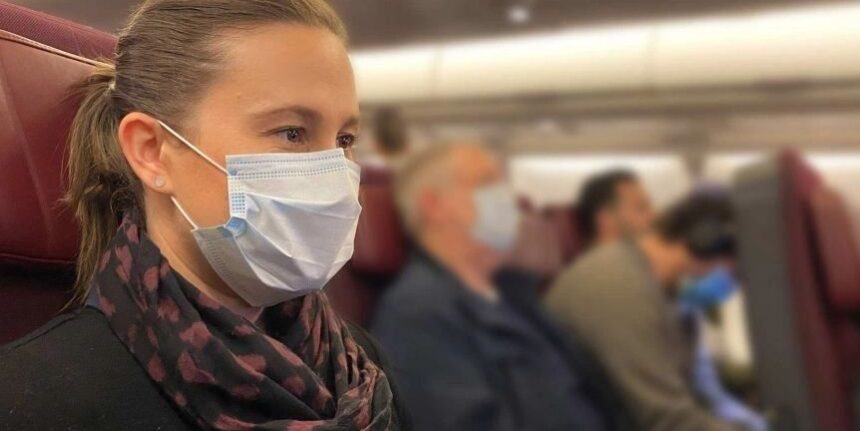
Given the fast spread of the newest Omicron subvariant of COVID-19 in the United States, countries should consider recommending that passengers wear masks on long-haul flights, according to World Health Organization (WHO) officials last week.
The XBB.1.5 subvariant has been found in Europe in modest but increasing numbers, according to WHO and European officials at a press conference.
Passengers should be advised to wear masks in high-risk settings such as long-haul flights, according to Catherine Smallwood, the WHO’s senior emergency officer for Europe, adding that this should be a recommendation issued to passengers arriving from anywhere COVID-19 transmission is widespread.
According to health experts, the most transmissible Omicron subvariant found thus far, XBB.1.5, accounted for 27.6% of COVID-19 cases in the United States during the week ending 7 January.
It was unknown if XBB.1.5 would spark its own worldwide outbreak. According to specialists, current vaccinations protect against severe symptoms, hospitalisation, and death.
Countries must examine the evidentiary foundation for pre-departure testing, and if action is taken, travel controls must be applied in a non-discriminatory way, according to Smallwood.
At this point, she continued, the FDA does not suggest testing for travellers from the United States.
Genomic surveillance and targeting travellers from other nations are possible measures as long as they do not drain resources away from local surveillance systems.
Others include monitoring wastewater at entrance sites such as airports.
XBB.1.5 is a descendent of Omicron, the most infectious and now worldwide dominant variant of the COVID-19 virus.
It’s a branch of XBB, discovered in October and is a recombinant of two different Omicron subvariants.
Concerns about XBB.1.5 fuelling a new wave of cases in the United States and elsewhere are growing in tandem with an increase in COVID cases in China after the country’s move away from its iconic “zero COVID” policy last month.
The Chinese Centre for Disease Control and Prevention found a prevalence of Omicron sublineages BA.5.2 and BF.7 among locally acquired infections, according to data provided by the WHO earlier this month.
The European Union Aviation Safety Agency (EASA) and the European Centre for Disease Prevention and Control (ECDC) issued recommendations for flights between China and the European Union on Tuesday, including non-pharmaceutical measures such as mask use and traveller testing, as well as wastewater monitoring as an early warning tool to detect new variants.
The organisations urge random testing on a sample of incoming passengers and increased cleaning and disinfection of planes servicing these routes.
More than a dozen countries, including the United States, require COVID testing from Chinese visitors.


Comments are closed.